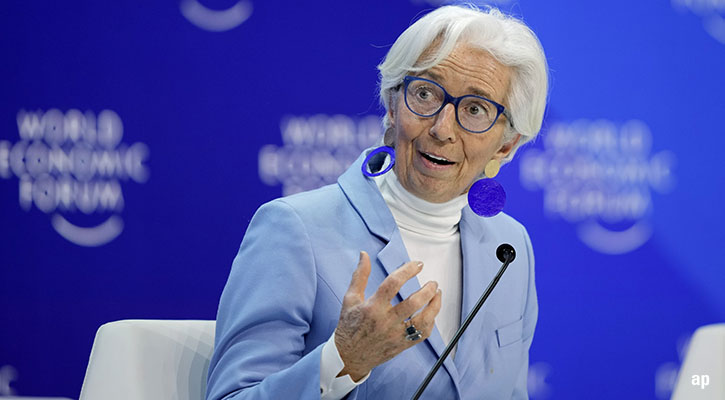Microsoft (MSFT) announced on June 13 that it has entered into a definitive agreement to purchase wide-moat LinkedIn (LNKD) in an all-cash deal that values the company at $26.2 billion (or $196 per LinkedIn share), inclusive of cash acquired. While the purchase price represents a premium to our $155 fair value estimate for LinkedIn, we believe it's a fair price given LinkedIn’s growing user base and large total addressable market, which LinkedIn tabulates at $115 billion. We think the data use case opportunities and fast-growing user base present unique opportunities for Microsoft’s enterprise initiatives, and we ultimately think this deal will unlock further growth for LinkedIn as it is weaved into Microsoft’s productivity suite. We are maintaining our $61 fair value estimate for Microsoft, and we think the company’s shares remain attractive at current levels. We will also maintain our wide moat and stable moat trend ratings for Microsoft, particularly because we also have a wide moat and stable moat trend ratings for LinkedIn.
Given the value that enterprises and recruiters place in LinkedIn's data network, we think the use cases LinkedIn provides for Microsoft are multifold, as the firm can leverage its massive enterprise customer base to promote LinkedIn’s tools around hiring, marketing, and social selling. Further, we think Microsoft’s Office and Dynamics CRM footprints will unlock new opportunities for customers to leverage these datasets to gain greater insights into hiring practices, sales methods, execution, and productivity.
LinkedIn represents the world’s largest professional social network, boasting 433 million active users and a revenue base that should easily exceed $3 billion in fiscal 2016, figures that are unmatched by any rival professional network. Under the structure of the deal, LinkedIn will remain a stand-alone entity under Microsoft’s umbrella, with LinkedIn CEO Jeff Weiner retaining his role, reporting to Microsoft CEO Satya Nadella.
Perhaps the most apparent impact of the LinkedIn acquisition, in our view, is the ability to leverage LinkedIn’s Sales Navigator into Microsoft’s Dynamics CRM. These tools will allow enterprise salespeople to bridge the gap from cold call to warm leads, which can pay massive dividends in terms of sales efficacy and closing duration. We think Microsoft has an opportunity to have one of the more unique value propositions within its CRM platforms versus its competitors, though the gap between it and larger players such as Salesforce.com and Oracle is sizable despite consistent growth from Dynamics in recent years.
We also view the Office 365 opportunity as a positive one for LinkedIn, though it will require careful execution on the part of Microsoft. LinkedIn provides valuable data that has applications around recruiting, talent management, and analytics that can integrate into calendar and word processing features of Office. This functionality will take time to build out, in our view, and is likely why Microsoft is forecasting somewhat muted cost synergies of just $150 million annually by fiscal 2018.
There are also numerous potential applications around learning: for example, LinkedIn’s training arm, Lynda.com, can be leveraged across each Office app to allow users to unlock greater value (six of the top 25 lessons on Lynda.com are built around Microsoft applications). Longer term, we think these training tools can have applications in Microsoft’s augmented reality business as well, but it is difficult to quantify that potential impact today.
On the other hand, we do see risks to the deal. First, LinkedIn revenue growth simply fails to live up to expectations and, in turn, justify Microsoft’s purchase price. Also, we could see a downside scenario where LinkedIn customers are less than enthusiastic about having their data in the hands of Microsoft, potentially reducing LinkedIn engagement and, in turn, the value of the platform’s data and network effects. However, we think the competitive dynamics facing LinkedIn are much more favorable than those facing some of the other large businesses Microsoft has acquired in the past. As such, we do not believe these downside outcomes are very likely.
While the cash outlay made in this deal is massive on its face, we do not believe Microsoft paid an exorbitant amount for LinkedIn. The $26.2 billion purchase price represents roughly 7 times our fiscal 2016 forecast for LinkedIn revenue. While we do not have a perfect comparison for LinkedIn, we compare this multiple with Facebook’s forward price/sales multiple of roughly 13 times, albeit on a larger revenue base generating greater growth and far superior profitability. However, we think Microsoft has the opportunity to accelerate LinkedIn’s user and revenue growth by leveraging its distribution resources and broad ecosystem of more than one billion users, and we think operating leverage in the LinkedIn business will materialize as Microsoft fine tunes the network’s cost structure over the long term. In turn, accelerated revenue growth, larger addressable market, and potential operating leverage could be enough to justify the premium that Microsoft paid for LinkedIn, in our view.
We believe Microsoft will be able to finance this deal in the debt markets at attractive rates, and the company has enough cash on hand to remain active in the mergers and acquisitions market if opportunities arise, though not necessarily at this scale. Management had already guided to strong investment expectations for Azure and cloud-based services in fiscal 2017, commensurate with our prior forecasts. Microsoft’s share repurchase program remains intact, with roughly $10 billion in buybacks remaining under authorization. Thus, we don’t see the LinkedIn acquisition as a terrible use of capital, and we remain encouraged that the company will continue to invest and deploy capital into other areas of the business.
We expect revenue contributions from LinkedIn to total just over $6 billion in fiscal 2019, the first year management expects the LinkedIn business to be accretive to Microsoft. We are modestly increasing our assumptions for Microsoft operating expenses in the near term as it works to integrate LinkedIn, but we do not believe the acquisition will preclude Microsoft from reaching our long-term assumptions for low-30s operating margins. We are also maintaining our medium uncertainty rating for Microsoft. Although LinkedIn’s stand-alone uncertainty rating is high, we think the hurdles Microsoft needs to clear in integrating LinkedIn are significantly lower than prior large-scale acquisitions, most notably Nokia, which was largely characterized as a move into an adjacent vertical versus a complementary product such as LinkedIn.
In terms of valuation, we continue to believe the market is undervaluing Microsoft’s long-term opportunity in the cloud, an initiative that we believe the LinkedIn acquisition adds an extra layer of potential growth. We think enterprises will continue to shift workloads to cloud-based environments over the next several years, which should yield strong growth for not only Azure compute and storage, but also Office 365, Dynamics CRM, and platform-as-a-service solutions from Microsoft as well.
Opplysninger: Morningstar gjør estimat av fremtidige kontantstrømmer. Disse estimatene, og andre forutsetninger, er beheftet med usikkerhet. Gjør alltid egne vurderinger før et eventuelt kjøp, eller salg, av verdipapirer. Artikkelen er skrevet som informasjon og inneholder synspunkter fra analytiker(e) på det tidspunktet det ble skrevet. Artikkelen ble først publisert 13.6.2016 på Morningstar Select.







.jpg)

:quality(80)/cloudfront-us-east-1.images.arcpublishing.com/morningstar/FGC25JIKZ5EATCXF265D56SZTE.jpg)












